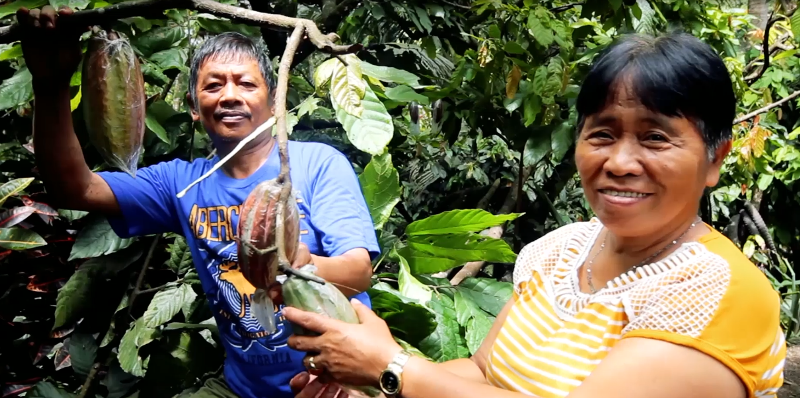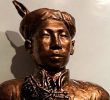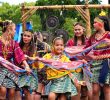
Ricardo and wife Erlinda Salazar (Fides Avellanosa/davaotoday.com)
DAVAO DEL NORTE, Philippines – Her childhood memory of the small hut where she and her four siblings lived together with her parents was still vivid in the mind of Jean Salazar-de la Torre, the eldest daughter of cacao farmers Ricardo and Erlinda Salazar.
“Kung moulan gani, mahinumduman nako akong papa manguha og dahon sa Marang aron itapal sa buslot sa among atop., ug manago mi mga bata sa ilalom sa among gamay nga lamesa aron di mi mabasa…”, (I could still remember my father would gather some Marang leaves to cover the holes in our ceiling where rain water seeped through while I and my siblings would hide ourselves under our small table so we won’t get wet,) Jean recalls.
When Ricardo Salazar’s family came to sitio Mabuhay Purok A in 1981, life was not easy. Modest and humble in his ways, Ricardo, now in his 80s, shared that he used to walk several kilometres to reach this place when logging companies lorded it over the forested area of “Sawata”, way before San Isidro was declared a municipality in 2004.
Ricardo started planting corn on a small farm lot in one of the logged over areas of Barangay Dacudao. It was only in the early 90’s that he started planting cacao when he joined the Mabuhay Farmers Multipurpose Cooperative, a local cooperative that eventually joined the Chocolate de San Isidro, Inc. (CSI).
Formed through the support of Department of Trade and Industry and the local government unit of San Isidro, Davao del Norte earlier on, CSI has been engaged in trading of beans and processing of tablea and cacao nibs mostly sourced from around 600 farmers with approximately 1,000 hectares of cacao farms. It has since became a partner of Peace and Equity Foundation, an NGO that supports SMEs, since 2013.
From a two-hectare lot that their father started to till and planted with corn in the early 90s, the family now has eight (8) hectares of fully planted land area gradually acquired through the years, some of which were already planted with coconuts and other fruit trees.
Diversified Farming
The Salazar’s cacao farm is one example of a successful diversified farming that has ensured food for the family. According to Ricardo, his cacao trees have been there for nearly three decades already.
Besides cacao, the family has also planted other fruit trees like mangosteen, durian, rambutan, lanzones, bananas, and coffee, to mention a few, that bear bountiful fruits during the months of August and September.
Some members of the family have even started their own businesses, raising livestock and acquiring service vehicles. Aside from selling cacao for PHP 90.00 per kilo (from PHP 40 per kilo) to CSI, the family also earns from the other crops planted in their farm all year round. On top of Jean’s own small “sari-sari” store, she has also been raising hogs and earns income from selling them.
According to Ricardo, her wife Erlinda was instrumental in improving not only their cacao production but also the whole family business with her untiring drive in making sure that their produce reaches their suppliers on time.
On his part, Ricardo also involve other farmers during harvesting season. One of these include the wrapping of every single cacao bod with water cellophane to ensure that pests like the cacao pod borer and black pod rot are kept out. Another regular activity is pruning the cacao trees to make the 30-year old trees yield more.
Looking back at how the family started way back then, Ricardo can only smile at himself. The family has indeed gone a long way, thanks to hard work and perseverance. (davaotoday.com)










